Building an automated medical billing system can be quite a challenge. However, more and more medical organizations are willing to throw their hat in the ring. Because poor billing and coding practices cost U.S. healthcare providers nearly $125 billion each year.
That’s how much is left on the table due to rejected claims, administrative costs, and under-coding. Keep reading if you’re looking for ways to improve the economic lifeblood of your practice. We’ll discuss everything you need to know to step up billing automation.
Top Takeaways
- Automated medical billing processes will help you increase the reimbursement rate and free your staff to work on other critical tasks.
- One trend in optimizing medical coding and billing, offering a measurable impact on the bottom line, is the inclusion of machine learning algorithms for data processing.
- A custom-built automated medical billing platform provides more flexibility in its feature set, perfectly integrates with existing solutions, and can become an additional revenue source on a SaaS model.
Table of Contents
An Overview of the Medical Billing Process
Top 3 Best Medical Billing Solutions
Why Do Medical Billing Systems Need Automation?
What Can Be Automated in Medical Billing?
Ready-Made vs. Custom Solutions
5 Steps of Medical Billing Automation
- Step 1. Discovery
- Step 2. Functional Proof of Concept
- Step 3. Rapid Prototypin
- Step 4. Development and QA
- Step 5. Deployment and Maintenance
How Topflight Transforms Medical-Billing Automation Ideas into Investor-Grade Products
Cost of Automating Medical Billing
An Overview of the Medical Billing Process
A typical medical billing process is neither too transparent nor streamlined. There are quite a few counterparties and multiple steps involved, and errors are common.
Usually, a clinic or practice has to clear all the following stages to get paid for its services:
- Collect patient demographics info (for new patients)
- Check patient insurance eligibility
- Assign diagnosis and/or treatment codes (after a patient has seen a specialist)
- Prepare a super bill containing an itemized list of all services provided to a patient
- Prepare and submit a health insurance claim to a clearing house or directly to a payer
- Go through the medical claim adjudication process
- Track the payment from the insurance company
- Settle deductibles, co-insurance, and co-payments as per ERA/EOB
- Bill the patient and track down the payment
Quite a hustle, right? No wonder all that can turn into a mess and cause lost revenue, e.g., in denied claims or underpayments. AI medical coding companies are revolutionizing healthcare by streamlining processes and increasing accuracy in billing and coding.
Top 3 Best Medical Billing Solutions
I suggest we review these medical billing platforms, touted as leaders by the top software review site (G2.com): Kareo, Amazon Comprehend Medical, and NextGen.
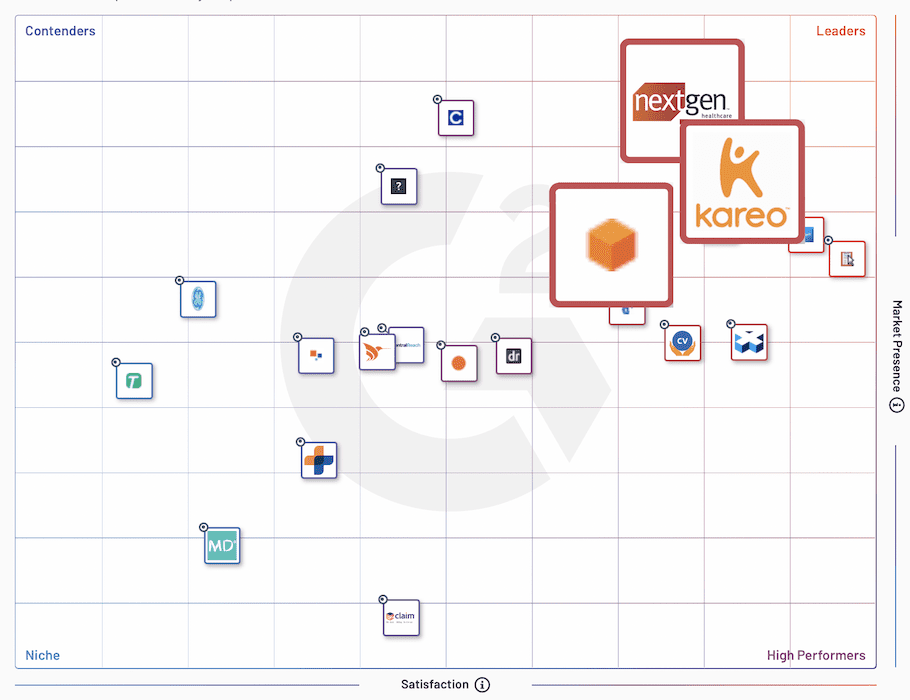
Kareo
Kareo is a cloud-based clinical and business management platform serving independent practices. Like NextGen, the platform includes much more than pure medical billing and covers all revenue cycle management tasks.
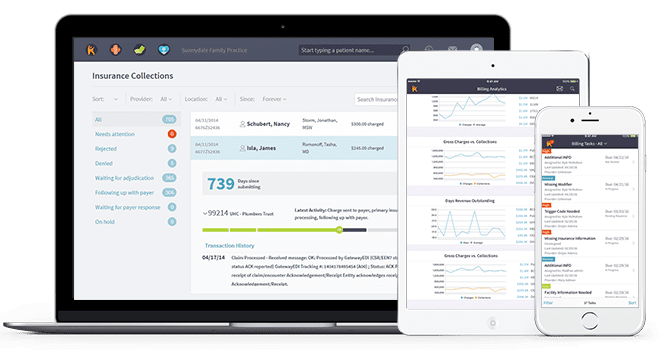
Key features:
- billing analytics
- automated ERA and unapplied payments processing
- claims submission and management
Amazon Comprehend Medical
Amazon Comprehend Medical stands out with its machine learning capabilities. The platform is optimized for automatically extracting information from unstructured medical texts.
 Key features:
Key features:
- automated claim capture, validation, and approval workflows
- linking of extracted entities to medical ontologies
- HIPAA-eligible natural language processing
NextGen
NextGen provides out-of-the-box practice management and EHR. The software also allows medical billers to create rules-based charges, manage claims scrubbing and processing, and handle A/R and reporting.
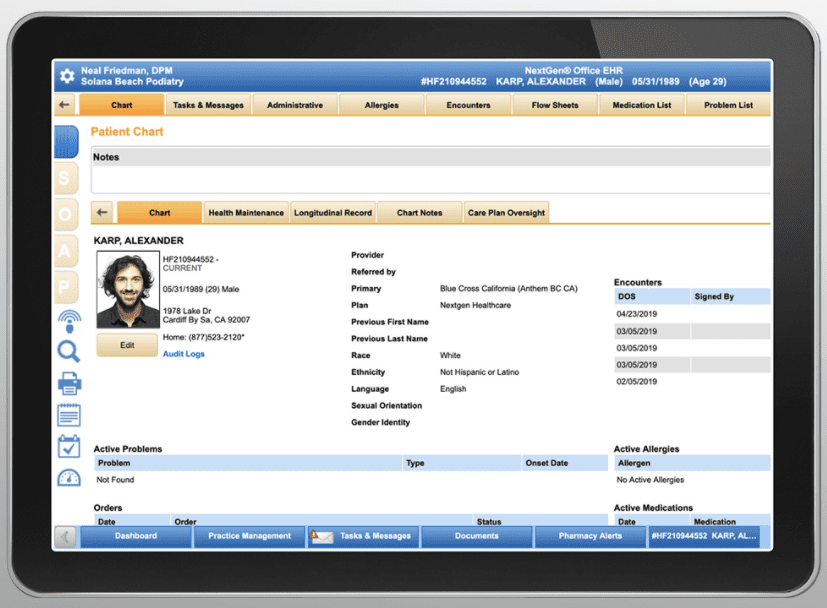
Key features:
- Billing management with support for clinical workflows
- Document management, EM coding, insurance and claims
- Voice recognition, medical templates, patient history
Why Do Medical Billing Systems Need Automation?
Automation brings about lots of advantages to businesses that embrace it. So let’s list the reasons for automating your medical billing system.
Fewer human-caused errors
Medical coders’ and billers’ routines involve many mundane tasks demanding critical attention to detail. Replacing this manual work with RPA (robotic process automation) helps alleviate potential issues with CPT and diagnostic codes.
As a result, more health insurance claims get paid on the first pass without needing to resubmit or correct data.
Also Read: Healthcare App Development Guide
Automatic payment posting and tracking
A medical billing solution allows billers to submit and track payment requests automatically. If any claims require additional efforts, all personnel will be notified promptly. This helps to streamline and fasten the reimbursement process.
Read more on healthcare payment system integration
You won’t miss submitting claims or appeals (if any).

Remain compliant
Since an automated healthcare billing system deals with sensitive patient data, it must conform to the HIPAA guidelines and protect patient data.
Also Read: HIPAA Compliant App Development Guide
Reporting
Having all critical data in a healthcare billing and coding solution makes it easy to pull reports aiding decision-making.
Lower operational costs
Finally, billing automation in healthcare allows your staff to spend time on other activities that directly affect customer satisfaction and the business’s bottom line.
If you’re curious about the EHR software cost, our blog provides an extensive overview.
What Can Be Automated in Medical Billing?
Automation of healthcare in medical billing applies virtually to all the steps outlined in the first section when describing a medical billing process. If handled manually, these iterations can be pretty time-consuming.
We can roughly divide these activities into:
Data aggregation and processing
Our medical billing software should pull all relevant patient medical history from an EHR and other internal systems deployed at a practice. We can even use machine learning algorithms to interpret medical notes and learn doctors’ coding habits.
Read more about EHR in medical billing in our blog.

Claims management
Once all details have been compiled into a super bill, a claim should be created and submitted electronically. The staff should be able to track its status and monitor automatically handled rejections or denials.
Payment tracking
Of course, automated medical billing processes integrate tightly with an accounting system to track payments, identify underpayments, etc.
Reporting
Finally, automatic reports help the management with decision-making.
Ready-Made vs. Custom Solutions
As with any software, there’s always an option to build a custom coding and billing solution or choose an off-the-shelf product. What are the upsides and downsides of each option?
Off-the-shelf solution
The biggest issue with ready-made software solutions is they pack too many features you probably won’t need. That’s because they are trying to serve both enterprises and small to medium-sized businesses. For you, that means overpaying for bells and whistles.
Apart from spending time on finding a perfect solution that has everything you need (and not much beyond), consider:
- Will this billing software integrate with the systems, e.g., EHR, that I already use?
- Do I have any power to introduce any changes to the software in the future?
- Won’t its cost overrun an option of having custom-developed, fully owned software in the long run?
Related: Creating a Hospital Management System
Custom-developed billing system
A custom solution will always have the exact features you need and integrate well with your existing infrastructure. In addition, you can add more options as you see fit later on.
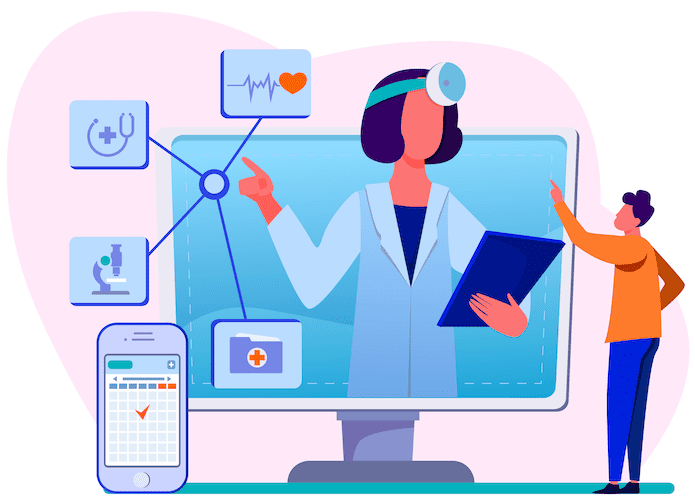
On the other hand, developing a custom solution may require a more substantial upfront investment than a ready-made billing platform. At the same time, you can always turn your software into a SaaS solution and get an additional revenue stream for your practice.
Dive deeper into health insurance verification automation to understand how it complements custom billing systems.
5 Steps of Medical Billing Automation
In terms of the development process, creating an automated medical billing system resembles the steps you take to make a medical app. One exception is if you’d like to use AI/ML features, you need one extra stage to create a functional proof of concept.
Here’s a quick rundown on all the required steps for medical billing automation.
| 5 Steps of Medical Billing Automation | |
|---|---|
| Step | Description |
| 1. Discovery | Define ROI goals, tech stack, and essential features in a lean canvas business plan. |
| 2. Functional Proof of Concept | Create a PoC to validate AI/ML algorithms for improved billing and coding efficiency. |
| 3. Rapid Prototyping | Build an interactive prototype and validate UX/UI with user feedback. |
| 4. Development and QA | Iteratively develop features, test functionality, and ensure a smooth deployment. |
| 5. Deployment and Maintenance | Move to production, monitor performance, and plan future updates with tracking tools. |
Step 1: Discovery
The initial phase implies creating a lean canvas with the business plan, including ROI goals, tech stack options, and a list of must-have features.
Step 2: Functional proof of concept
To take advantage of machine learning algorithms to streamline your billing and medical coding processes and improve their accuracy, you must build a quick PoC. This step validates smart algos to see if they help you achieve the required efficiency.
NB: partnering with a healthcare app development company well versed in AI/ML is critical at this stage.
Step 3: Rapid prototyping
The next move is to prepare an interactive prototype and validate it with end-users, ensuring their feedback is accounted for in the platform’s UX and UI.
Step 4: Development and QA
During the development phase, you will start pushing out biweekly releases, testing the implemented functionality of your medical billing software. Your goal is to proceed with quick iterations, attacking one feature at a time so that you can deploy the solution faster.
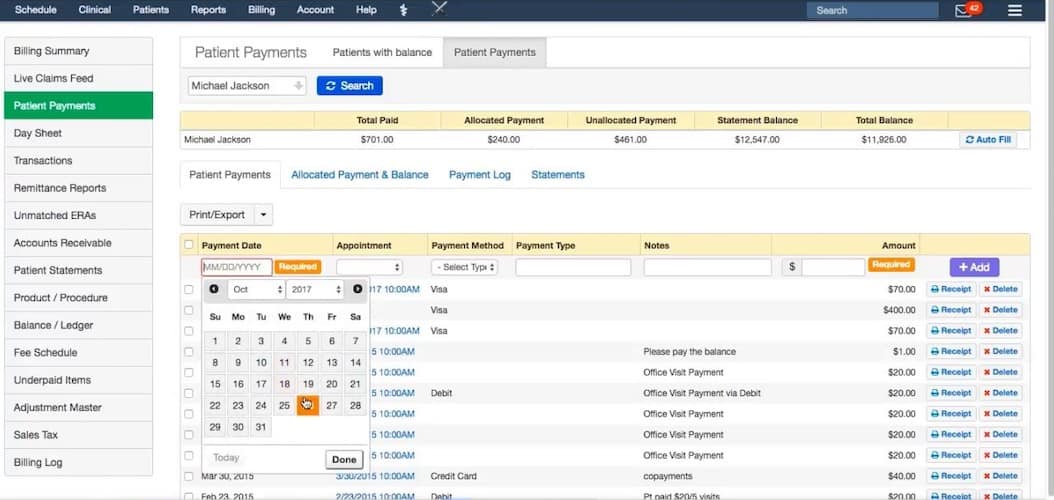
Read more on medical billing software development.
Step 5: Deployment and maintenance
When all necessary features have been deployed, it’s time to move the platform to a production environment. From this point on, you’ll monitor its performance and user engagement and plan future iterations with the help of automatic tracking tools.
How Topflight Transforms Medical-Billing Automation Ideas into Investor-Grade Products
Medical-billing automation lives or dies on airtight code accuracy and denial-proof workflows—not on who can shout “AI” loudest at a trade show. That’s why founders behind GaleAI tapped Topflight to turn a proof-of-concept into a market-ready platform. In just 1,100 engineering hours we delivered an MVP that now identifies CPT codes in seconds, lifts provider revenue up to 15 %, and slashes coding effort 97 %—while surfacing 7.9 % more billable codes than human reviewers.
Those wins aren’t a one-off. Topflight’s broader playbook—AI consulting, secure health-data integration, and revenue-cycle automation—anchors the “Why healthcare leaders trust us” section on our own homepage . And the results travel: clients we’ve engineered products for have raised more than $188 million in follow-on funding to date .
What partnering with Topflight gets you
AI-first RCM accuracy – NLP and deep-learning models surface every payable CPT/HCPCS code, stamping out under-coding before it hits the payer.
Real-time payer connectivity – Eligibility, benefits, and prior-auth APIs resolve in seconds, turning “call the payer” hold music into a relic.
Compliance baked in – HIPAA, SOC 2, and PHI-safe cloud pipelines from sprint one keep auditors yawning, not gasping.
Investor-ready dashboards – Recovery rates, denial velocity, and revenue lift instrumented at MVP stage, arming you with metrics VCs underwrite.
Cost of Automating Medical Billing
The cost of automation in medical billing will depend on the scope of your solution. If you envision AI/ML as the core part of the software, the price will probably be between $150,000 and $200,000. And if you’re looking to automate medical billing without reverting to AI algorithms, you need to budget around $80,000 — $120,000. Minimal viable product for both scenarios.
I also encourage you to read about the cost to develop a health insurance app in our dedicated blog.
If you want to automate medical billing at your practice by creating a custom web or mobile solution, get in touch with our experts. We’ll be happy to share our expertise.
[This blog was originally published in June 2022 and has been updated for more relevant content]
Frequently Asked Questions
What are the top trending features in medical coding solutions?
AI/ML capabilities to parse speech, text, and images.
Should I build a custom medical billing solution or get a SaaS subscription instead?
If you want to start small and get immediate benefits, build a custom solution.
Is there a tech stack recommended for creating an automated billing solution?
No. You’re absolutely free to pick any technology. In fact, your choice should be based on how well this or that tech stack allows for integrating with your existing systems.
How much does it cost to build an automated healthcare billing system?
Between $80,000 and $200,000, depending on the scope.
